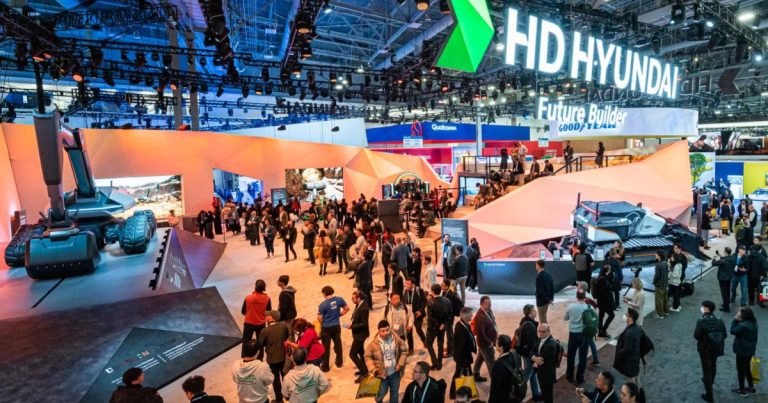The company presents the Xite Transformation concept and announces forward-looking global collaborations
HD Hyundai says its Future Builder vision stole the show at the recent CES 2024 technology event in Las Vegas. This concept aims to improve the safety of the construction industry, enhance equipment productivity, and ensure long-term low-carbon sustainability.
Under the banner Xite Transformation (pronounced “site”), the South Korean shipbuilder and heavy industry company took the world by storm at the world’s largest technology event, showcasing a range of autonomous machines, zero-carbon energy systems and connected site management.
Kesun Chung, Vice Chairman and CEO of HD Hyundai, delivered one of the event's keynotes, introducing the Xite Transformation concept and announcing a series of forward-looking global collaborations with leading technology partners, including Google and Gravis Robotics.
HD Hyundai claims to lead the construction machinery market with its Advanced All-Around View Monitoring (AAVM) camera system that provides operators with maximum visibility throughout the machine. The company also offers Intelligent Moving Object Detection (IMOD) technology that senses and warns the operator if people or objects are within 5 meters of the machine.
As part of the Xite Transformation, HD Hyundai's X-Wise AI platform is designed to take site safety to the next level. Using safety sensors and fully autonomous machinery, such as the company's 4.5-metre-long futuristic unmanned excavator, it will be possible to separate high-risk equipment from site workers, reducing the risk of accidents and injuries.
Through the use of connected robots, HD Hyundai also demonstrated how in the future a single operator will be able to work remotely from the office, controlling a group of machines on site. The company aims to remotely control equipment operating in hazardous environments, eliminating safety incidents and enhancing on-site performance. Self-driving machines equipped with 3D guidance and control systems will be able to operate autonomously, increasing productivity and providing a solution to future skilled labor concerns.
HD Hyundai is no stranger to hydrogen and electric power systems. Their shipping companies are already working toward a carbon-neutral future, using hydrogen produced from renewable energy to power ocean-going ships. The company is also developing self-driving hydrogen-powered trucks, which will be able to deliver fuel to more remote locations to power construction equipment.
Elsewhere 1000 meters away2 Demonstration area, the company showed the management of the Twin Xite site. The X-Wise AI-powered construction management solution links and collates massive amounts of data, collected from sensors and drones on site, along with machine learning technologies from excavators, cranes and transport trucks, to model future work and control equipment on the ground. By collaborating with Google Cloud, HD Hyundai will be able to maximize the productivity and efficiency of on-site equipment, while ensuring minimal risk to customers.
Visitors to the exhibition had the opportunity to experience much of this technology for themselves, using simulators to control the bulldozer that was operating thousands of kilometers away in Atlanta. There were also virtual reality headsets that allowed visitors to experience a range of futuristic machines and solutions. Life-sized autonomous construction equipment was present, giving exhibition visitors the opportunity to experience the construction industry of the future.
“Without changing the way we build, we cannot change our future,” Mr. Chung said. “That's why we at HD Hyundai are here today, to share HD Hyundai's vision to change the course of humanity, by changing the future of the construction industry. We call it Xite Transformation, invoking the latest technologies across all industries so we can transform how we build our infrastructure and live our lives.” And our future.
“We have three main goals with Xite Transformation. First, to enhance safety on construction sites, to reach zero accidents using the latest digital technologies; second, to achieve a quantum leap in productivity, by eliminating any idle time or downtime on construction sites.” Our ultimate goal is site independence and thirdly, decarbonisation of our construction sites, to make future construction net zero.

